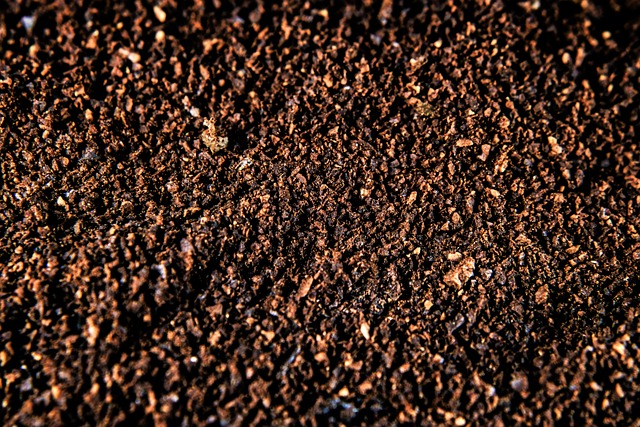Identifying the culprit is the first step toward effective control in the intricate world of pest infestations. Among the peskiest of the invaders is the German cockroach. German roaches, notorious for their adaptability and rapid reproductive abilities, are unwelcome visitors in any abode.
When invading, these pests often leave behind telltale signs of their presence: droppings. These minute yet impactful remnants provide crucial clues that can assist in the early detection and elimination of these persistent household pests.
Their waste not only serves as a warning sign of an infestation but also offers essential insights into their activity’s severity and location. Keep reading to learn about German roach droppings and the crucial identification characteristics you may miss!
Deciphering the Enigma: What are German Roach Droppings?
German roach droppings, often called frass or fecal material, are minuscule in size, typically resembling black pepper or coffee grounds specks. These pellets are distinctive identifiers, differing from other pests’ droppings in appearance and composition.

Fresh droppings appear dark brown or black, gradually aging to reddish-brown. Their diminutive size, averaging around 1 to 2 millimeters in length, allows them to easily blend into various surfaces, making detection challenging.
The content of these droppings primarily consists of food particles, insect parts, and other organic matter consumed by these omnivorous pests. While individually inconspicuous, the accumulation of these droppings over time unveils a larger issue—indicating a thriving colony nearby.
Recognizing the Telltale Signs: Where to Find German Roach Droppings
German roaches are adept at finding cozy hiding spots within human habitats, favoring warm, humid, and dark environments. Understanding their preferences aids in pinpointing areas prone to droppings accumulation.
Commonly frequented locations include kitchen cabinets, drawers, and crevices near food sources, such as pantries, or around appliances like refrigerators and dishwashers. Bathrooms, particularly in and around sinks, behind toilets, and along pipes, also serve as favored nesting sites for these resilient pests.
Their knack for maneuvering through tight spaces grants them access to areas where droppings might gather unnoticed. You’ll typically find German roach droppings in corners, along baseboards, and near entry points. Identifying these trails and focusing on these areas during inspections can significantly aid in uncovering the extent of an infestation.
Addressing German Roach Droppings
German roach droppings are a clear indicator of a growing infestation. You’ll need to act swiftly to prevent their proliferation and the potential health hazards they pose.
Thorough Sanitation: Begin the battle against German roaches with rigorous sanitation measures, especially in areas where roaches are common, like cabinets, fridges, and countertops. Eliminate potential food and water sources by keeping areas clean and dry. Regularly dispose of garbage, seal food in airtight containers, and promptly fix any leaks or moisture-prone areas to deter their survival and reproduction.
Seal Entry Points: German roaches can expertly hide anywhere, squeezing through tiny crevices and gaps with ease. Seal potential entry points around windows, doors, and utility entry points to prevent their infiltration.
Use of Baits and Insecticides: Using bait stations and insecticides specifically formulated for German roaches can be an effective means of control. These products directly target the pests and disrupt their life cycle, reducing their population.
Professional Pest Control Services: For severe infestations or persistent problems, we recommend you seek assistance from professional pest control services. Trained experts possess the knowledge, tools, and experience to tackle German roach infestations and prevent future occurrences.
Health Risks Associated with German Roach Infestations
Beyond the inconvenience they cause, German roach infestations pose substantial health risks to inhabitants.
The proteins present in German roach droppings and saliva are known allergens, causing allergic reactions in sensitive individuals. These reactions range from skin rashes and nasal congestion to severe respiratory issues.

Furthermore, the propensity of German roaches to scavenge in unsanitary locations, coupled with their penchant for crawling over food preparation areas, increases the risk of spreading harmful bacteria such as Salmonella and E. coli. These pathogens can lead to food poisoning and gastrointestinal infections.
German roach droppings, seemingly innocuous in appearance, are potent indicators of a lurking infestation that demands immediate attention. Their presence signifies a nuisance and poses health hazards to occupants.
Understanding where these droppings accumulate and employing comprehensive eradication strategies are pivotal to combat these resilient pests. Vigilance, coupled with meticulous sanitation practices and, if necessary, professional intervention, is crucial in eradicating German roaches and preventing their resurgence.
Eliminate Roaches with proof.
Regularly checking for signs like droppings, swift intervention upon detection, and deploying effective control methods are vital in preventing these unwanted pests from making your home theirs.
Thankfully, that’s where our experts at proof. Pest Control excel! If you suspect a roach infestation, reach out to us. We’re here to address the issue swiftly, offering tailored solutions for a pest-free home.
Don’t let roaches take charge. Contact us today for reliable pest control services. We’re here to protect your peace of mind and provide you with a roach-free environment!

